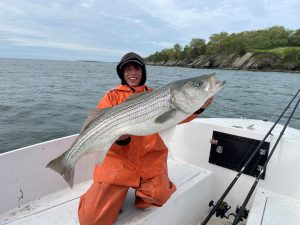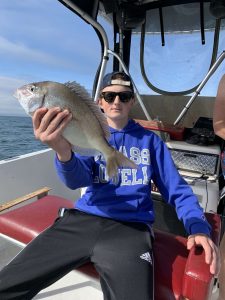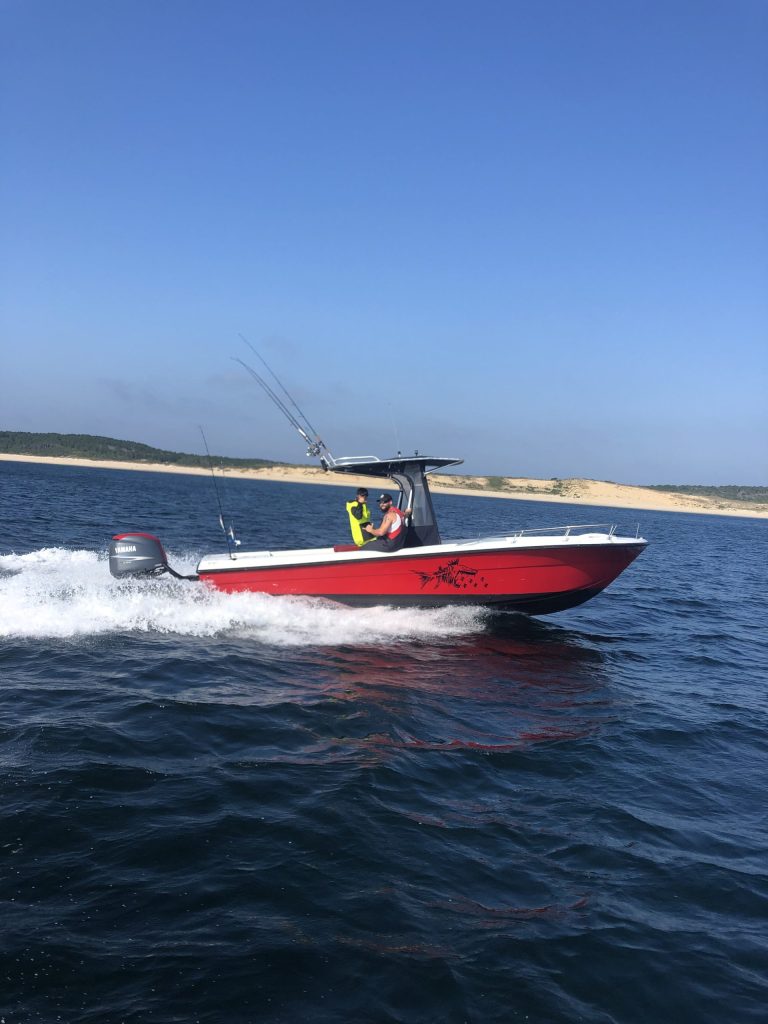What to wear on a fishing trip
Solid Summer and Winter Fishing Outfits
When it comes to fishing, dressing appropriately for the weather conditions is crucial to ensure a comfortable and successful outing. Let’s take a closer look at solid summer and winter fishing outfits.
Summer Fishing Outfit: During the hot summer months, it’s essential to prioritize comfort and protection from the sun. Here’s a breakdown of a solid summer fishing outfit:
- Lightweight and Breathable Clothing: Opt for light-colored, loose-fitting shirts and pants made of breathable materials like cotton or moisture-wicking synthetic fabrics. This helps keep you cool and allows for better airflow.
- Sun Protection: Protecting yourself from the sun’s harmful rays is paramount. Wear a wide-brimmed hat to shield your face, ears, and neck. Don’t forget polarized sunglasses to reduce glare and protect your eyes. Apply a high SPF sunscreen to exposed skin, and consider wearing a lightweight, long-sleeved shirt for added sun protection.
- Footwear: Choose comfortable and quick-drying shoes or sandals with a good grip. Closed-toe shoes are preferable to protect your feet from sharp objects or fish hooks.
- Accessories: Bring a lightweight rain jacket or windbreaker in case of unexpected weather changes. Don’t forget a buff or neck gaiter to protect your neck and face from the sun or bugs. Carry a small backpack or fishing vest to store essential items like sunscreen, bug repellent, extra hooks, and line.
In colder climates, dressing appropriately for winter fishing is crucial to stay warm and safe. Here’s a breakdown of a solid winter fishing outfit:
- Layering System: Dressing in layers is critical to regulating body temperature and staying warm. Start with a moisture-wicking base layer made of synthetic materials or Merino wool to keep moisture away from your skin. Add a mid-layer like a fleece or wool sweater for insulation. Finally, wear a waterproof and windproof outer layer such as a jacket and pants to protect against the elements.
- Head and Hand Protection: In cold weather, a warm hat or beanie is essential to retain body heat. Consider wearing a balaclava or face mask to protect your face from windburn. Insulated gloves or mittens are crucial for keeping your hands warm and dexterous.
- Insulated Footwear: Invest in protected, waterproof boots or waders to keep your feet warm and dry. Layer your socks with moisture-wicking liners and thermal socks for added insulation.
- Safety Equipment: Don’t forget to wear a life jacket or personal flotation device (PFD) when fishing in cold conditions. Falling into cold water can be dangerous, and a PFD can save your life.

Remember, the specific clothing and accessories you need may vary depending on the location and fishing activity. Always check the weather forecast before heading out and adjust your outfit accordingly.
By wearing the appropriate summer or winter fishing outfit, you can enhance your comfort, protect yourself from the elements, and fully enjoy your fishing experience.
Weather Protection
Weather protection is a crucial consideration when planning a fishing trip. Being prepared for various weather conditions ensures your safety, comfort, and the success of your outing. Here are some important factors to consider when it comes to weather protection:
- Check the Forecast: Stay informed about the weather conditions before heading out. Check reliable sources such as the National Weather Service or local meteorological services. Be aware of any weather alerts or warnings for your area.
- Dress Appropriately: Dressing in layers is an effective way to adapt to changing weather conditions. Layering allows you to add or remove clothing as needed to maintain comfort. Start with a moisture-wicking base layer to keep sweat away from your skin. Add insulating layers for warmth, and top it off with a waterproof and windproof outer layer to protect against rain, wind, and cold temperatures.
- Rain Gear: Invest in high-quality rain gear, including a waterproof jacket and pants. Look for materials that are not only waterproof but also breathable to prevent excessive sweating and discomfort. Additionally, ensure your rain gear has a hood, or consider wearing a brimmed hat to keep rain off your face.
- Sun Protection: Even on overcast days, UV rays can still harm your skin. Protect yourself from the sun by wearing a wide-brimmed hat, sunglasses with UV protection, and applying sunscreen to exposed skin. Consider wearing lightweight, long-sleeved shirts and pants made from UV-protective fabrics.
- Shelter: In case of sudden downpours or thunderstorms, having a portable shelter, such as a pop-up canopy or a small tent, can provide a refuge from the elements. It also offers a place to store your gear and take a break if needed.
- Stay Hydrated: Extreme heat or cold can dehydrate you quickly. Remember to bring an adequate supply of water and stay hydrated throughout your fishing trip.
- Lightning Safety: Lightning is a serious threat when fishing during thunderstorms. If you hear thunder or see lightning, seek shelter immediately. Avoid open areas, tall trees, or metal objects that can attract lightning. It’s best to wait until the storm passes before resuming your fishing activity.
- Stay Informed: Keep a portable weather radio or a smartphone with weather apps to stay updated on changing weather conditions while on the water. This allows you to make informed decisions about continuing or ending your fishing trip if severe weather approaches.
Remember, your safety should always be the top priority. If the weather conditions become too severe or unsafe, it’s better to reschedule your fishing trip for another day.
Why Dressing in Layers is Great for a Fishing Trip
Dressing in layers is an excellent strategy for a fishing trip, as it allows you to adapt to changing weather conditions and ensures your comfort throughout the day. Here’s why dressing in layers is great for a fishing adventure:
- Temperature Regulation: Weather conditions can vary significantly throughout the day, especially near water bodies. Dressing in layers enables you to manage your body temperature effectively. If it’s cold in the morning, you can start with multiple layers to keep warm. As the day progresses and temperatures rise, you can remove layers to prevent overheating.
- Flexibility and Adaptability: Layering provides flexibility, allowing you to adjust your clothing as needed. You can easily add or remove layers to accommodate changes in weather, exertion levels, or even changes in shade and wind conditions. This adaptability ensures that you stay comfortable, regardless of the prevailing conditions.
- Moisture Management: Layering helps in managing moisture effectively. A moisture-wicking base layer draws sweat away from your skin, keeping you dry and preventing chilling caused by evaporative cooling. By layering moisture-wicking fabrics with insulating materials and a waterproof outer layer, you can prevent moisture from seeping in while allowing excess heat and perspiration to escape.
- Protection from the Elements: Fishing often involves exposure to various weather elements such as rain, wind, and sun. Layering with appropriate outerwear protects against these elements. A waterproof and windproof outer layer keeps you dry during rain showers and protects against chilling winds. Wearing lightweight, long-sleeved shirts and pants made of UV-protective fabric shields you from harmful sun rays.
- Versatility: Layering allows you to customize your outfit based on personal comfort preferences. You can choose different combinations of base layers, mid-layers, and outer layers to suit your needs. Additionally, layering provides the option to remove or add clothing easily, enabling you to transition from one activity to another without the hassle of changing outfits entirely.
- Emergency Preparedness: In the event of an unexpected drop in temperature or adverse weather conditions, having extra layers readily available can be a lifesaver. Layering ensures that you have enough clothing to keep warm and protected, even in challenging situations.
- Gear Accessibility: Layering also offers the advantage of easy access to pockets and gear. By wearing multiple layers, you can distribute the weight of your tools, tackle, and personal items more evenly. This makes it convenient to access essential gear without compromising comfort or mobility.
When preparing for a fishing trip, consider the expected weather conditions and dress in layers accordingly. Remember to choose moisture-wicking fabrics, insulating layers, and appropriate outerwear for protection. By dressing in layers, you can stay comfortable, adaptable, and prepared for any weather changes, allowing you to focus on enjoying your fishing experience.
What to wear on a fishing trip
Choosing the right clothing for a fishing trip is crucial for your comfort, safety, and overall enjoyment of the experience. Here’s a guide on what to wear on a fishing trip:
- Shirts: Opt for lightweight, long-sleeved shirts made of breathable fabrics like cotton or moisture-wicking synthetic materials. Long sleeves protect from the sun and help prevent insect bites. Avoid wearing loose clothing that can easily snag on fishing hooks or equipment.
- Pants/Shorts: Choose comfortable and durable pants or shorts suitable for the weather and location. Quick-drying materials like nylon or polyester are ideal, as they repel water and dry quickly if you get wet. Consider wearing pants instead of shorts in areas with dense vegetation or biting insects.
- Footwear: Select footwear that provides comfort, stability, and protection. Closed-toe shoes with good traction are essential to prevent slips and fall on wet surfaces. Consider wearing lightweight hiking shoes, water shoes, or fishing boots, depending on the terrain and water conditions. Remember to wear socks that provide cushioning and wick away moisture.
- Hat/Cap: Protect your face, head, and neck from the sun by wearing a hat or cap with a brim. A wide-brimmed hat offers better sun protection for your face and neck, while a baseball cap is useful for shielding your eyes from glare. Look for hats made from breathable materials that allow airflow and prevent overheating.
- Sunglasses: Invest in polarized sunglasses to reduce glare and improve visibility on the water. Polarized lenses help you see beneath the surface, making it easier to spot fish and underwater structures. Choose sunglasses with UV protection to safeguard your eyes from harmful sun rays.
- Layers: Dressing in layers allows you to adjust your clothing according to changing weather conditions. Start with a moisture-wicking base layer to keep sweat away from your skin. Add insulating layers like a fleece or sweater for warmth, and top it off with a waterproof and windproof outer layer.
- Rain Gear: Always carry a lightweight, waterproof rain jacket or poncho in case of unexpected showers. A packable rain jacket is convenient to carry and provides effective protection against rain and wind. Pair it with waterproof pants if necessary.
- Accessories: Additional accessories to consider include gloves, buffs or neck gaiters, and insect repellent. Gloves protect against cuts, abrasions, and sunburn, especially when handling fish or hooks. Buffs or neck gaiters can shield your face and neck from the sun, wind, and bugs. Apply insect repellent to ward off mosquitoes and other biting insects.
- Life Jacket/PFD: If you’ll be fishing from a boat or near deep water, wearing a properly fitting life jacket or personal flotation device (PFD) is essential for safety. Choose a comfortable PFD that allows freedom of movement and meets the necessary safety standards.
Always consider the weather, location, and specific fishing activity when deciding what to wear. Dressing appropriately ensures your comfort, protection, and the ability to fully enjoy your fishing trip.
Deep sea fishing trip
Embarking on a deep-sea fishing trip can be an exhilarating adventure, offering the opportunity to catch big game fish and explore the vastness of the open ocean. When preparing for a deep-sea fishing trip, consider the following aspects:
- Clothing: Dress in layers to accommodate changing weather conditions and the potential for sea spray. Start with a moisture-wicking base layer, followed by insulating layers such as a fleece or sweater, and top it off with a waterproof and windproof outer layer. Choose clothing made from quick-drying materials to stay comfortable even if you get wet.
- Footwear: Wear comfortable and sturdy deck shoes or boat shoes with non-slip soles. It’s important to have good traction on wet surfaces to prevent slipping and injury. Avoid wearing open-toed shoes or sandals, as they may not provide adequate protection.
- Sun Protection: Deep sea fishing often involves long hours under the sun. Protect yourself by wearing a wide-brimmed hat to shield your face, neck, and ears from the sun’s rays. Use sunscreen with a high SPF rating on exposed skin and reapply regularly. Wear polarized sunglasses to reduce glare and protect your eyes.
- Safety Equipment: Prioritize safety by wearing a properly fitting life jacket or personal flotation device (PFD) throughout the trip. Familiarize yourself with the location and proper use of emergency equipment, such as life rafts and emergency beacons, on the vessel.
- Seasickness Prevention: If you’re prone to seasickness, take preventive measures before boarding the boat. Consider using over-the-counter or prescription seasickness medication, wearing acupressure wristbands, or using other remedies recommended by your healthcare professional. It’s also helpful to stay hydrated and avoid consuming greasy or heavy foods before and during the trip.
- Accessories: Bring along essential accessories such as a waterproof watch, a small backpack or dry bag to protect your belongings, and a camera to capture memorable moments. Don’t forget to pack any necessary fishing gear or equipment, or inquire if they are provided by the charter company.
- Follow Instructions: Listen carefully to the captain and crew’s instructions regarding safety protocols, fishing techniques, and equipment usage. They have extensive experience and knowledge to ensure a successful and safe deep-sea fishing experience.
- Food and Drinks: Check with the charter company about their policies on food and beverages. Some trips may provide meals and drinks, while others may require you to bring your own. Pack sufficient snacks, water, and any desired beverages to stay hydrated and energized throughout the trip.
Remember, deep-sea fishing trips can be physically demanding, so it’s important to be prepared and in good health. Follow all safety guidelines provided by the crew and enjoy the thrilling experience of fishing in the open waters.
Conclusion:
Embarking on a fishing charter trip is an exciting adventure for anglers of all levels. Before setting sail, there are a few essential factors to consider. First and foremost, ensure that you have a valid fishing license that allows you to fish legally in the designated area. Once that’s in order, you’ll want to select the right charter boat for your needs. Whether you opt for a half-day trip or a full-day excursion, charter boats provide the necessary equipment and expertise to enhance your fishing experience. Dressing appropriately is crucial, especially in hot weather. Opt for light-colored clothing that reflects the sun’s rays and helps keep you cool throughout the trip. To protect your belongings from fish slime and water, it’s a good idea to bring double zip-lock bags or waterproof containers. As you cast your line, keep in mind the possibility of a trophy catch—a memorable moment that deserves to be captured. So, don’t forget to bring a camera or smartphone to preserve those exciting memories. With these considerations in mind, you’re well-equipped to embark on a fishing charter and make the most of your time on the water. Packing sunblock only takes a few seconds to throw it in the back for your full-day trip.

